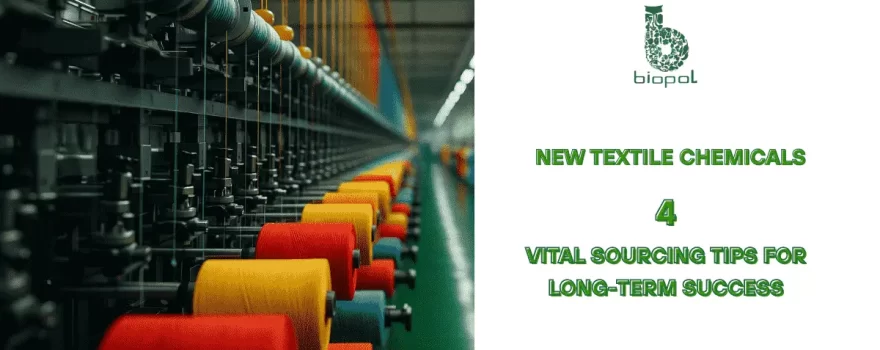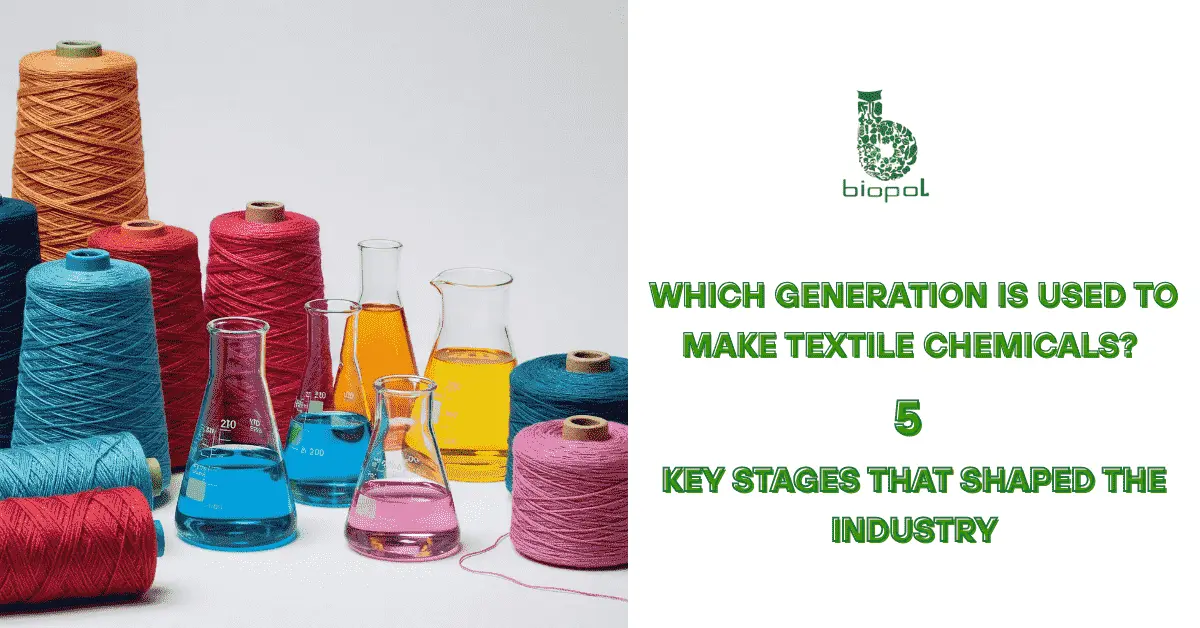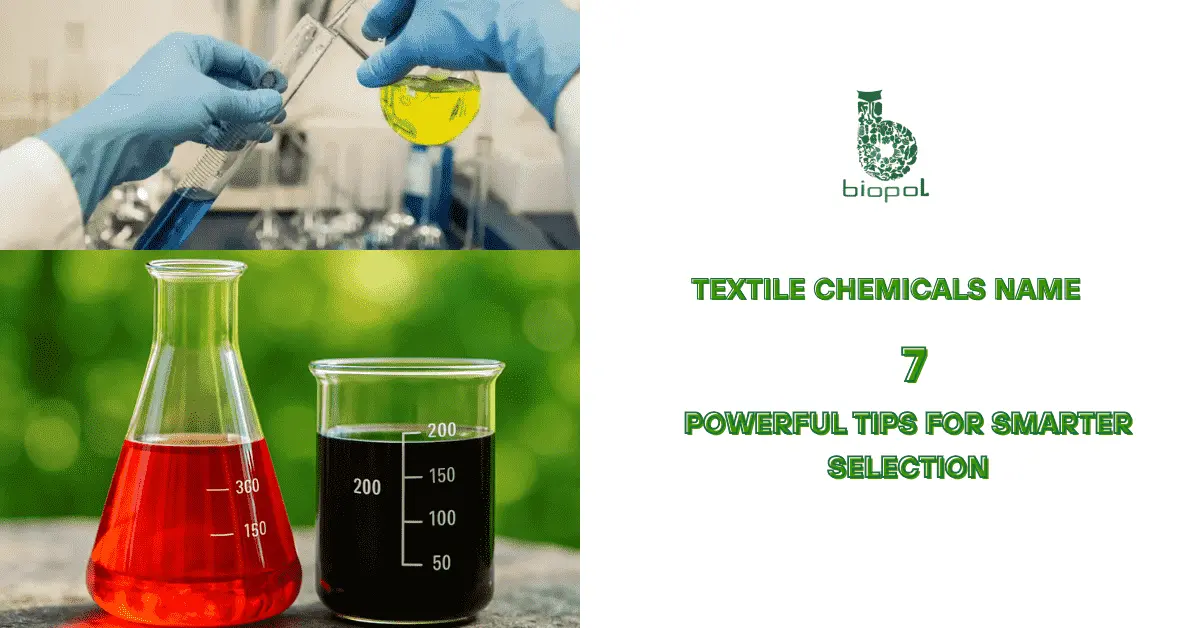
New textile chemicals are reshaping how fabrics are developed, enhancing strength, sustainability, and function. From eco-friendly dyes to smart coatings, these innovations are transforming industries. As global demands shift, so does textile chemistry—faster, cleaner, and smarter than ever. Dive into the essentials that are powering the next generation of textiles.
Table of Contents
Introduction to New Textile Chemicals
New textile chemicals are changing the fabric of industries across the globe. Imagine a world where materials become smarter, more durable, and even eco-friendly with just a chemical touch. It’s not magic—it’s science at work. These innovative solutions are enhancing textile properties in ways that were once thought impossible.
From enhancing fabric strength to making textiles water-resistant, new textile chemicals are making waves in the industry. These advancements are transforming everything from everyday clothing to high-performance materials used in automotive and aerospace applications. The benefits are clear: better performance, longer lifespan, and reduced environmental impact. What could be more important in an age where sustainability and innovation are key? The future of fabrics is unfolding, and it’s paved with new textile chemicals.
Benefits and Market Drivers
The growing demand for sustainability and high-performance fabrics is driving the need for new textile chemicals. These chemicals not only address environmental concerns but also meet consumer expectations for durable, functional textiles.
Key Market Drivers:
- Sustainability: Reduction in environmental impact, such as water and energy usage, and fewer harmful by-products.
- Performance Demands: Need for textiles that last longer, are more functional, and provide better value.
Key Advantages:
- Eco-Friendly: Biodegradable and non-toxic chemicals that reduce the ecological footprint of textile production.
- Improved Durability: Enhanced resistance to wear, fading, and other signs of deterioration.
- Advanced Features: Fabrics gain properties like water resistance, stain resistance, and UV protection.
New textile chemicals are essential for achieving sustainable, durable, and high-performance fabrics—ensuring long-term benefits for both manufacturers and consumers.
Innovations in Textile Chemistry
New textile chemicals are redefining how fabrics are dyed, treated, and finished. Innovation is no longer optional—it’s the benchmark. With sustainability and efficiency at the core, recent breakthroughs are setting new standards in textile chemistry.
Notable Innovations:
Bio-Based Dyes:
Derived from agricultural waste, algae, and plant sources, these dyes reduce dependency on petrochemicals.
- Lower toxicity
- Biodegradable
- Reduced water consumption in application
Smart Coatings:
Advanced formulations add responsive features to fabrics.
- Temperature regulation
- Self-cleaning surfaces
- Antimicrobial protection without leaching harmful substances
New Dyeing Auxiliaries:
Next-generation auxiliaries allow for dyeing at lower temperatures and shorter cycles.
- Lower energy use
- Enhanced dye uptake
- Less wastewater generation
Comparative Snapshot:
| Innovation Type | Key Feature | Environmental Impact |
| Bio-Based Dyes | Natural origin, low toxicity | Minimal |
| Smart Coatings | Functional fabric enhancement | Durable with low runoff |
| New Dyeing Auxiliaries | Reduced energy & water use | Lower emissions, cleaner effluents |
New textile chemicals are shifting focus from mere coloration to intelligent and sustainable fabric engineering. These breakthroughs are not just trends—they are strategic responses to global demands.
Applications Across Textile Sectors
New textile chemicals are reshaping product capabilities across industries. From everyday apparel to specialized technical fabrics, their applications are both broad and impactful. Functionality is no longer a luxury—it’s an expectation.
Sector-Wise Applications:
Apparel:
- Water Repellency: Outdoor and activewear benefit from fluorine-free water-repellent finishes that maintain breathability.
- Wrinkle Resistance: Easy-care garments use new resin systems that avoid formaldehyde.
- Anti-Odor Treatments: Silver-free antimicrobial coatings keep clothes fresher, longer.
Technical Textiles:
Flame Resistance: Protective gear and uniforms use halogen-free flame retardants for safety without compromising comfort.
UV Protection: Textiles for sports and defense are enhanced with UV-absorbing agents for extended outdoor performance.
Conductivity: Coatings with carbon nanotubes or metallic ions support applications in wearable electronics.
Home Furnishings:
Stain Resistance: Sofas, carpets, and curtains are treated with non-PFAS stain-blocking agents.
Mold & Mildew Control: Antifungal chemical treatments maintain hygiene in humid environments.
Colorfastness: New auxiliaries improve dye fixation, preserving vibrancy through repeated washes.
At a Glance:
| Sector | Functionality Enabled | Benefit Delivered |
| Apparel | Water repellency, odor control | Enhanced comfort and cleanliness |
| Technical Textiles | Flame resistance, UV shielding | Safety and long-term durability |
| Home Furnishings | Stain resistance, color retention | Long-lasting aesthetics and hygiene |
New textile chemicals make it possible to engineer fabrics that don’t just meet specifications—they exceed expectations. To ensure optimal performance and compliance, understanding specific textile chemicals requirements is essential for each application, from pre-treatment to finishing.
Smart Sourcing
New textile chemicals deliver real value only when paired with the right supply partner. Choosing a chemical manufacturer isn’t just a procurement decision—it’s a strategic move. The right partner brings reliability, innovation, and compliance to the table.
What to Look for in a Supplier:
Proven Quality:
Consistent performance matters. Leading manufacturers offer validated formulations backed by certifications and application support.
Technical Expertise:
Partners with R&D capabilities help adapt new textile chemicals to specific substrates, processes, and end-use goals.
Regulatory Compliance:
REACH, ZDHC, and GOTS-compliant products reduce risk and support global market access.
Custom Formulation Services:
Whether optimizing dye penetration or adjusting finish softness, flexible partners provide process-specific solutions without compromise.
Selection Checklist:
| Criteria | Why It Matters |
| Product Consistency | Minimizes variation and rework |
| Application Support | Ensures correct usage and efficiency |
| Innovation Pipeline | Keeps production ahead of market trends |
| Compliance Documentation | Avoids legal and export complications |
| Local Availability | Reduces lead time and logistics costs |
Sourcing new textile chemicals from the right manufacturer means more than securing supply—it means securing performance, sustainability, and long-term growth.
FAQs
What are today’s key textile industry challenges?
The textile industry faces several key challenges. Environmental regulations are becoming stricter, pushing for more sustainable practices to reduce pollution. At the same time, rising raw material costs, particularly for cotton, polyester, and chemicals, are driving up production expenses. Moreover, global competition remains fierce, as price wars and offshore manufacturing create pressure on local players, making it increasingly difficult to remain competitive.
What were three historical issues in the textile industry?
Historically, the textile industry grappled with excessive water usage during dyeing and finishing processes, which led to significant environmental concerns. Additionally, toxic chemical discharge was a major issue, contaminating ecosystems and harming local communities. Labor conditions were also poor, with workers often facing low wages and unsafe working environments, a problem that has slowly gained attention over time.
What are the chemical hazards in the textile industry?
Textile manufacturing involves various chemical risks, such as:
What are the chemical hazards in the textile industry?
Textile manufacturing involves various chemical risks, such as:
- Formaldehyde and azo dyes, which can be carcinogenic.
- Volatile organic compounds (VOCs) from solvents that affect air quality.
- Heavy metals in dyes and pigments, which contaminate water systems.
- Exposure to these can harm workers and ecosystems if not managed properly.
Which of the following is a challenge facing the textile industry?
The textile industry is increasingly focused on meeting sustainability standards and adhering to regulatory compliance. Stricter environmental laws require manufacturers to adopt eco-friendly practices, reduce waste, and use sustainable materials. Keeping up with these regulations while maintaining cost efficiency is a major challenge for many companies.

